Walking up to the top floor of Harvey Hall, you feel the cold, smooth metal railing slide through the palm of your hand. Natural light floods the stairwell from several large windows.
It’s a long climb up four flights, and you stop at a drinking fountain. The refreshing water passes through your lips, and you’re ready to continue down the hall.
The artificial lighting is brighter here, and more natural light streams in through skylights in the ceiling and passes through windows under your feet, sending sunshine to the floor below. A row of large paintings adorns the wall. Birch trees grow below rolling hills and three people peer out at you below an orange sun.
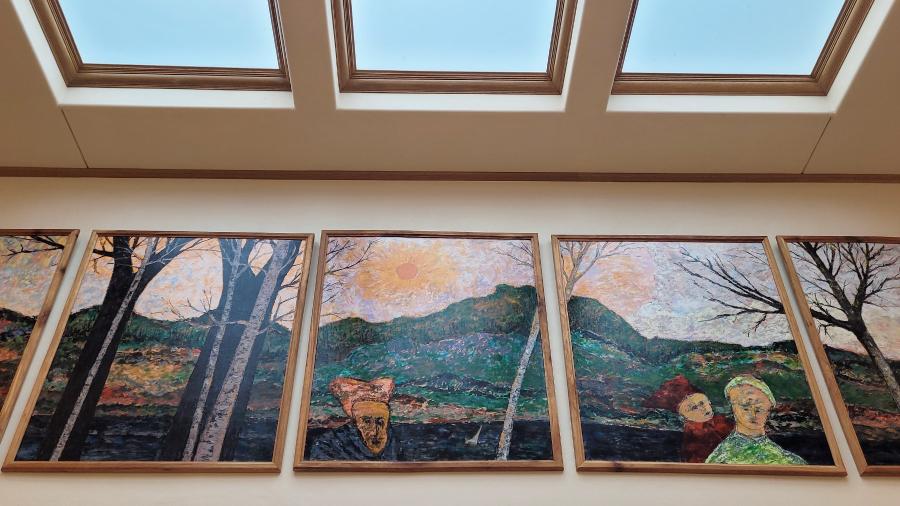
You enter a classroom and see tables lined with tape measures and calipers. But this is the wrong building for a metals or woodworking class. You also notice several blindfolds. Wait – blindfolds?
Welcome to Professor Desiree Budd’s bachelor’s in psychology class on Perceptions, where juniors and seniors are using the Method of Limits to measure the threshold for detection of a stimulus.

Remember the change in light from the stairwell to the hallway, the touch of the railing on your palm and water on your lips? You noticed these changes because of the touch-sensitive receptors on the surface of your skin, mapped onto a part of your brain known as the somatosensory cortex.
Students use the method to measure the two-point threshold on their fingertips, forehead and forearm. The two-point threshold is a measure of how far apart two points of contact on the skin have to be before you feel them as two separate points instead of one.
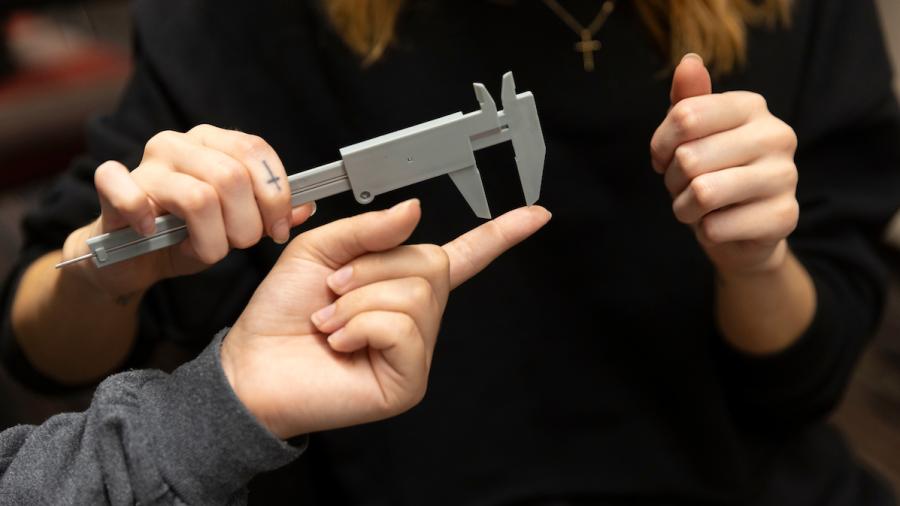
Students work in teams, taking turns wearing blindfolds and using calipers as a two-point touch device. They measure the circumference of each other’s head, fingertip and forearm. Then, they measure tactile spatial acuity, or the ability of the somatosensory cortex to detect touch across spatial points.
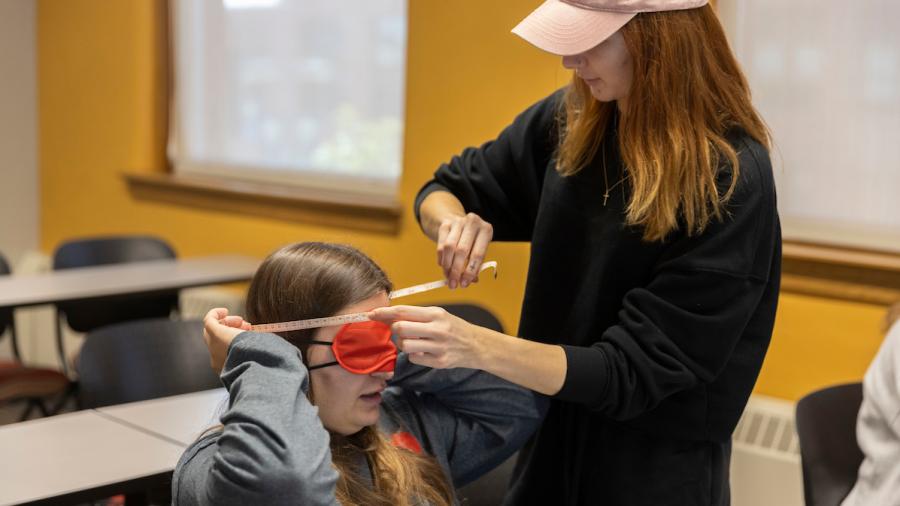
“The idea being if you are born with all the touch receptors you are ever going to have, then people with smaller bodies will in general have a smaller two-point threshold than people with larger bodies,” Budd explained.
Psychology junior Allison Letcher is interested in learning human behaviors and how people respond to different stimuli. Her career goals include working with athletes in sports psychology. She plays guard for Blue Devil women’s basketball.

“This experiment was just cool to see what areas of our body are most sensitive and easiest to detect a two-point stimulus,” said Letcher, of Windom, Minn. “I could see this being an activity I do with athletes in my career.”
Budd walks among her students. “Have you ever noticed that some parts of your face are a lot more sensitive to touch than other areas? For example, your lips are way more sensitive than your cheeks, ears or forehead.
“This is because the touch-sensitive receptors in your skin are denser in some areas than others. The more densely packed the receptors, the more sensitive the area is to touch, and the larger the size of that body region’s map on the somatosensory cortex.”

Your fingertips, for example, have a lot of receptors packed into a small area and have a high-touch sensitivity. They’re mapped onto a relatively large region of your somatosensory cortex. And, so the two-point threshold for the fingertip is tiny compared to that of the forearm.
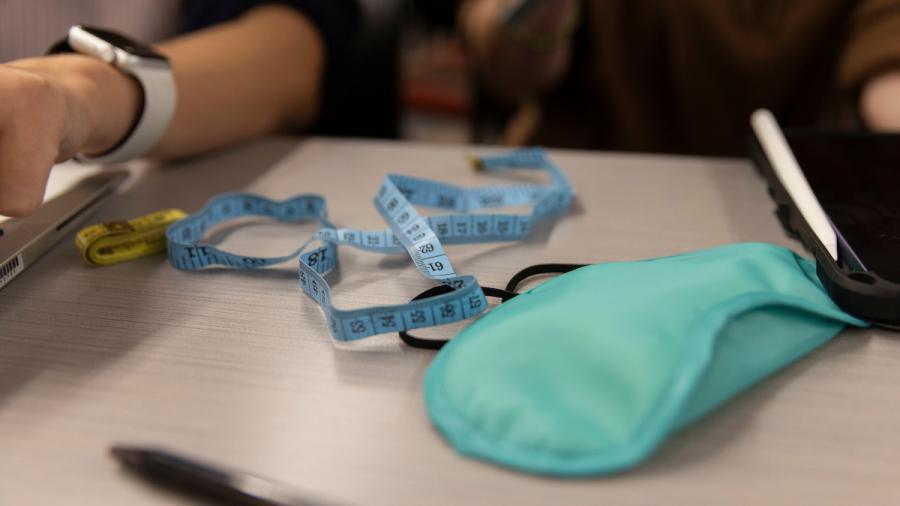
“If you drew an image of the human scaled to represent the density of touch receptors in the skin, it would have huge lips, tiny forehead, huge hands and tiny feet. This representation is referred to as the sensory homunculus,” Budd described.
“The two-point threshold test helps students better understand sensory processing in the brain, and determining a person's two-point threshold is a valuable skill for professionals across diverse fields,” she said.

In Letcher’s case as a sports psychologist, she may use the test to help athletes enhance their tactile perception for better performance.
The test can also guide physical therapists in designing rehabilitation exercises to improve patients’ sensory perception and fine motor skills. It can help clinicians identify nerve damage and sensory disorders in patients and monitor their recovery from injuries or surgeries involving nerves or sensory pathways.
In product design, knowing a person's two-point threshold can aid in the development of more comfortable or user-friendly products, including touchscreens with the right level of sensitivity for optimal user experience.
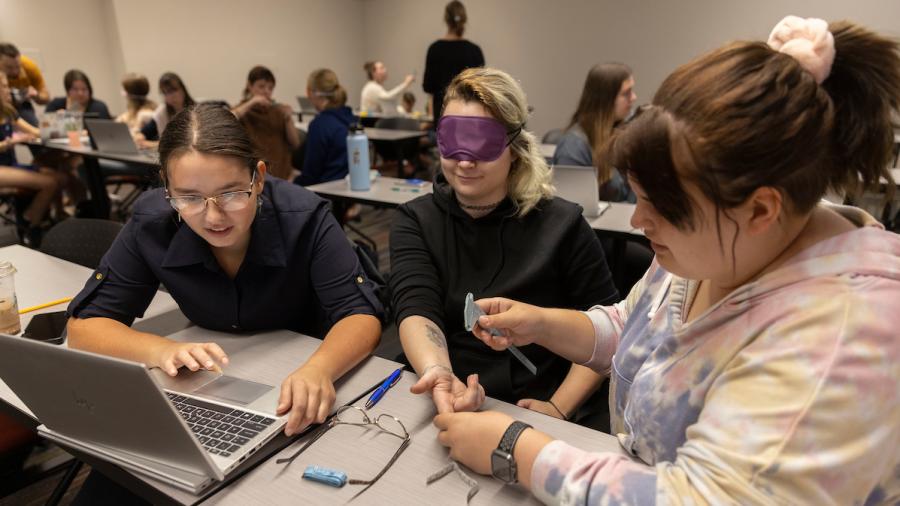
A few doors down the hall, two graduate students in M.S. applied industrial/organizational psychology meet with Program Director Dana Linnell.
Cohort members Kate Sulzle and Khalid Alzahrani discuss Sulzle’s research conducted with Manna Prescher. They presented “The Story of Research on Evaluation: Continuing a Thorough Investigation on Recent Trends,” co-authored by Linnell and Professor Alicia Stachowski at the 2023 American Evaluation Association conference, held in Indianapolis last fall.
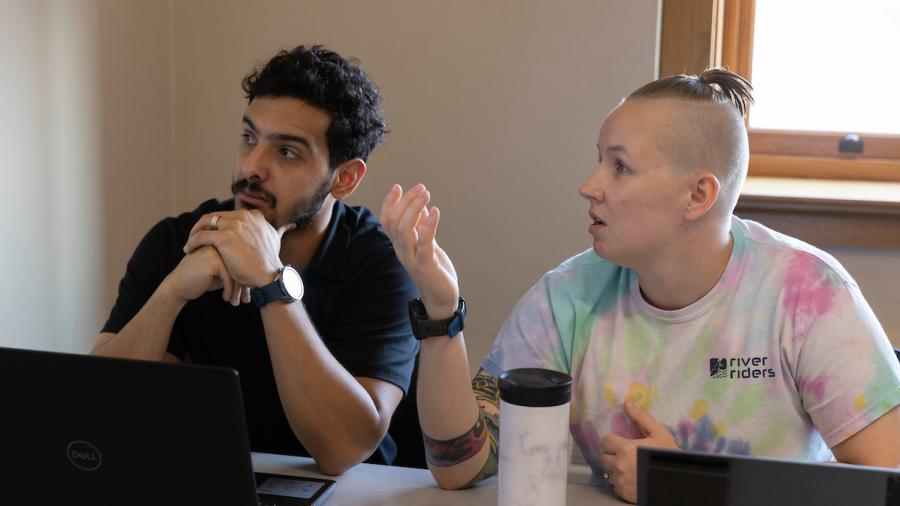
Applied psychology students conduct multiple research projects, creating real-world solutions for on-campus and external clients through graduate assistant opportunities and on-campus research centers. With an understanding of human behavior in the workplace, they are preparing to help improve organizations’ productivity, efficiency, employee satisfaction, work environments and more.
“Evaluation is a new and upcoming field. By exploring Research on Evaluation, not only are we able to look at what we have done, but we also are able to determine the future directions of the field,” said Prescher, who has been a member of Linnell’s ROE research team since 2022.
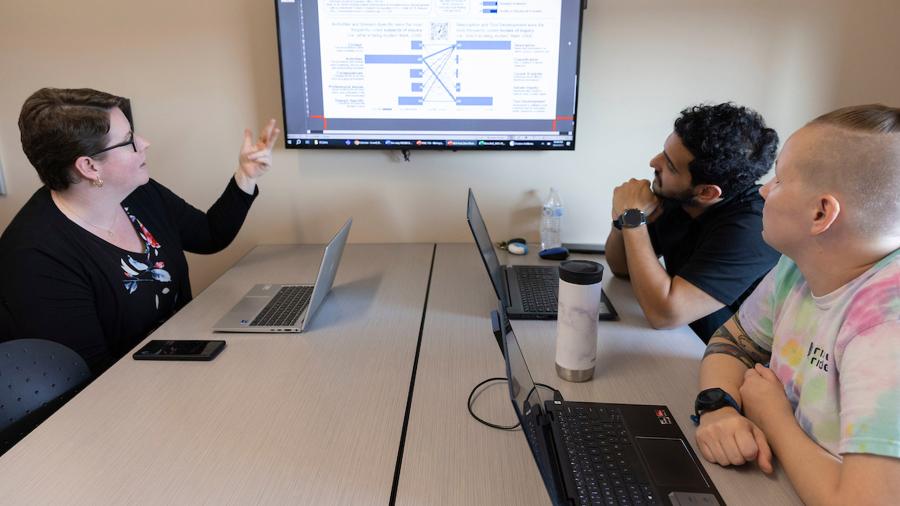
Prescher believes the master’s program is preparing her in many ways for her future career, especially in the hands-on opportunities it offers.
“I have done an evaluation for a real client with a team, conducted occupational health psychology needs assessment for a real client, developed a survey, conducted a selection report, job analysis, worked as a research assistant and more,” said Prescher, who will graduate in fall 2024. She hopes to work in a research-focused area that makes her feel fulfilled, with a team where she can continue to grow.





